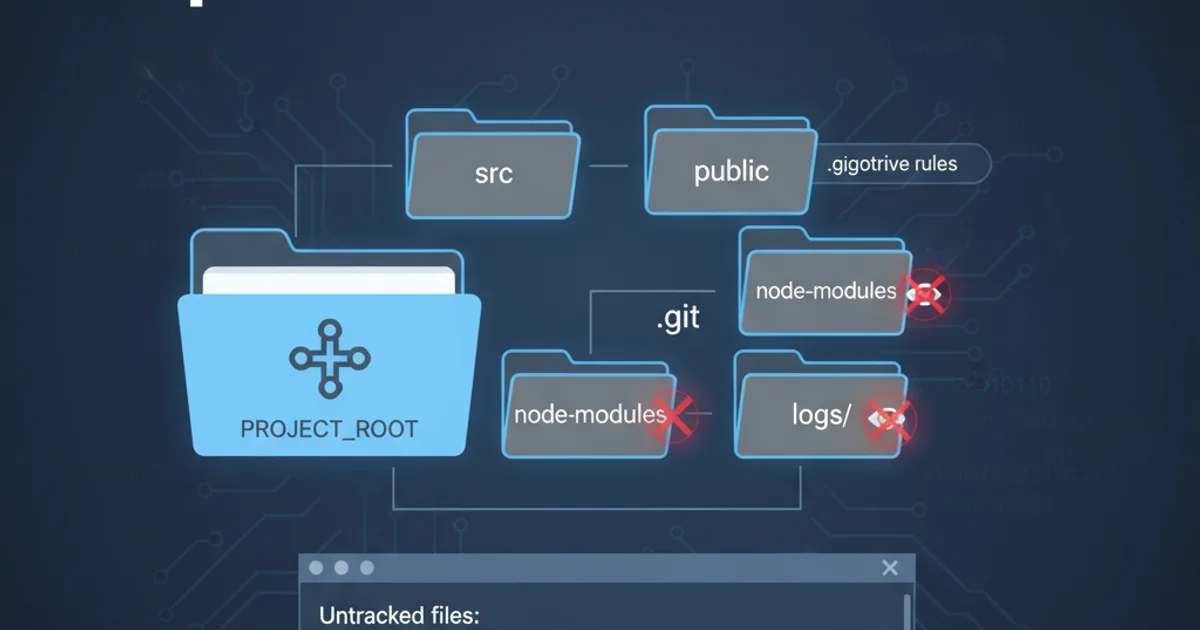Ignoring directories in Git repositories on Windows
Categories:
Mastering .gitignore: Ignoring Directories in Git Repositories on Windows

Learn how to effectively use .gitignore files to prevent unwanted directories and files from being committed to your Git repositories on Windows, enhancing repository cleanliness and collaboration.
When working with Git on Windows, it's common to encounter various system-generated files, IDE-specific directories, or build outputs that should not be part of your version-controlled repository. The .gitignore file is a powerful mechanism that allows you to specify intentionally untracked files and directories that Git should ignore. This article will guide you through the process of setting up and managing .gitignore files to keep your Windows-based Git repositories clean and focused.
Understanding .gitignore Basics
The .gitignore file is a plain text file where each line contains a pattern for Git to ignore. These patterns can be file names, directory names, or wildcard expressions. When Git performs operations like git add or git status, it consults the .gitignore file and skips any matching entries. This is crucial for preventing temporary files, compiled binaries, or sensitive configuration data from being accidentally committed.
flowchart TD
A[Start Git Operation] --> B{Check .gitignore?}
B -- Yes --> C[Read .gitignore patterns]
C --> D{File/Directory Matches Pattern?}
D -- Yes --> E[Ignore File/Directory]
D -- No --> F[Track File/Directory]
B -- No --> F
F --> G[Continue Git Operation]
E --> GFlowchart illustrating how Git processes .gitignore rules during operations.
Creating and Locating .gitignore on Windows
On Windows, creating a file named .gitignore directly in File Explorer can sometimes be tricky because Windows expects a filename before the extension. You can overcome this by using the command prompt or Git Bash.
The .gitignore file should typically reside in the root directory of your Git repository. You can also have multiple .gitignore files in subdirectories, with rules applying to that directory and its children. More specific rules in a subdirectory's .gitignore take precedence over broader rules in a parent directory's .gitignore.
cd /path/to/your/repo
# Using Git Bash or Command Prompt
touch .gitignore
# Or using echo to add initial content
echo "*.log" > .gitignore
Creating a .gitignore file using the command line.
.gitignore. The IDE handles the underlying file system quirks for you.Common Patterns for Ignoring Directories
Here are some common patterns you'll use in your .gitignore file, specifically tailored for Windows development environments. Remember that patterns are case-sensitive on some systems, but Git generally handles this gracefully on Windows.
# Ignore all files with a specific extension
*.obj
*.exe
*.dll
*.pdb
# Ignore a specific directory and its contents
bin/
obj/
node_modules/
# Ignore all directories named 'build' anywhere in the repo
**/build/
# Ignore a specific file
mysecret.config
# Ignore all files in a directory, but not the directory itself
logs/*
# Exclude a specific file from an ignored directory
!node_modules/keep_this_file.js
# Ignore Visual Studio specific files/folders
.vs/
*.suo
*.user
*.aps
# Ignore temporary files
*~
*.tmp
# Ignore macOS specific files (if collaborating cross-platform)
.DS_Store
Examples of common .gitignore patterns for Windows development.
.gitignore will not untrack it. You must first remove it from the repository using git rm --cached <file> and then commit that change.Global .gitignore for All Repositories
For files and directories that you want to ignore across all your Git repositories on a Windows machine (e.g., operating system specific files like Thumbs.db or common IDE temporary files), you can configure a global .gitignore file. This is particularly useful for maintaining a consistent ignore policy without having to add the same entries to every project's .gitignore.
1. Create a global .gitignore file
Choose a location for your global .gitignore file, for example, C:\Users\YourUser\.gitignore_global. Create this file and add your common ignore patterns to it.
2. Configure Git to use the global file
Open Git Bash or Command Prompt and run the following command to tell Git where your global ignore file is located:
git config --global core.excludesfile C:\Users\YourUser\.gitignore_global
Replace C:\Users\YourUser with your actual user directory path.
3. Verify the configuration
You can check if the global configuration was applied correctly by running:
git config --global core.excludesfile
This should output the path to your global .gitignore file.
.gitignore files in the repository (from top to bottom, with more specific rules overriding general ones), then patterns in the global .gitignore file, and finally patterns in the .git/info/exclude file (which is local to the repository but not committed).